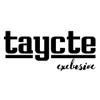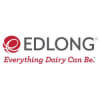Editor’s note: This story is the first installment in a monthly series looking at the benefits of industry consolidation. Previous articles sponsored by BMO Harris Bank can be found here.
As snacking giant Mondelez was trying to get into the trendy better-for-you food market in 2015, it acquired the leading allergen-free snacking company, Enjoy Life Foods.
"To Mondelez’s credit, I think what they saw was it’s more than just a brand, and it’s more than just a product line," Joel Warady, general manager and chief sales and marketing officer at Enjoy Life Foods, told Food Dive. "There’s a lot of tribal knowledge, and there’s a lot in the legacy and the history that is hard to put on paper."
Like the Enjoy Life acquisition showed, industry consolidation means more than getting products and facilities or access to resources and capital. Companies also gain the brainpower that makes their targets worth acquiring. The acquiring company often has proven success and resources to back it up, while the acquisition target has a promising, profitable future ahead.
Larger food and beverage companies will always have critical lessons they can share with the smaller brands they acquire. But examining the unique expertise, energy and innovations smaller brands can also share with the companies can shed more light on industry consolidation's benefits for both sides of the transaction.

How major brands can educate their acquisition targets
Discussion of industry consolidation benefits often focuses on the resources and experience that larger companies can offer smaller acquisition targets. Larger brands often have both statistical data and personnel expertise gained and refined during several years — if not decades — they can share with brands they acquire.
This knowledge can span from end-to-end of the brand’s manufacturing processes, supply chain, marketing funnel and print and digital marketing strategies, shipping and distribution logistics, food safety and testing, ingredient sourcing, and new ingredient and manufacturing technologies developed in-house.
“An expert team, who could be very well-paid by something like a corporate strategic, can offer insights that you haven’t thought about before or equipment that you haven’t had a chance to use yet,” Dayna Fields, senior M&A reporter at Mergermarket, told Food Dive. “…It might get you thinking about new product launches. Maybe they’ve been sitting in R&D for some time because you needed guidance or more input.”
“An expert team, who could be very well-paid by something like a corporate strategic, can offer insights that you haven’t thought about before or equipment that you haven’t had a chance to use yet.”

Dayna Fields
Senior M&A reporter at Mergermarket
Executives, management teams and in-house consultants with demonstrated expertise and experience often come at a cost that many smaller brands cannot afford themselves. Post-acquisition, the target brand may have access to its acquirer’s own team of experts, or may receive the capital needed to hire experts itself.
The learning opportunities smaller brands offer in return
Conversely, smaller brands can offer unique insights and niche expertise to the company acquiring them. From breakthroughs in product design and manufacturing processes to ingredients and marketing innovations, a smaller brand’s success with a new or trending concept is often what makes it an attractive acquisition target in the first place.
“For a large strategic, they bring a young fresh brand onboard, and they can learn all kinds of 'tricks of the trade' from a smaller target that maybe they’re too large to be in touch with or tap into,” said Fields. “These smaller brands are much closer to the ground, much closer to the consumer and very nimble.”
Last year, Unilever was in acquisition discussions with fast-growing high-protein ice cream brand Halo Top. While the ice cream segment and its major players had remained relatively unchanged for several decades, recent years brought an explosion of innovation across the category. Larger brands had continued dabbling in new flavors, but true disruption in the category has come from smaller, health-conscious brands like Halo Top.
By answering consumers’ calls for better-for-you desserts, Halo Top began gobbling up market share as well as shelf space both earned and purchased, Fields said. The brand’s rapid expansion clearly appealed to Unilever, though Unilever officially backed out of acquisition talks in January.

Still, Unilever’s reported $2 billion interest in Halo Top and its protein-rich, low-calorie ice cream products is an example of the trend toward food fortification. Market Research Future reported growth for the global food fortification ingredient market to increase at an expected 4.5% CAGR through to 2022. As more major food companies explore and increase their portfolio of fortified products, M&A speculation and activity for brands that specialize in it could grow exponentially.
“That kind of patent can be very attractive to someone like a Nestle or Unilever, who can certainly afford to commission their own R&D team to come up with something,” said Fields. “But it might take more time, for one, when they could just acquire it.”
'I think they’ve learned how to be a bit more nimble'
Besides innovations in product development, ingredients and manufacturing techniques, acquisition targets can also offer their acquirer a refresher course on agility, flexibility and speed to market. That agility allows smaller brands to respond more quickly and successfully to evolving consumer demands — particularly in the better-for-you product space, where larger legacy brands often have less experience.
“I think initially the [other Mondelez] brand teams were amazed by how fast we’re able to develop and launch a product, and I think they’ve taken some learnings from that,” said Warady. “When does it make sense to take some shortcuts? When does it make sense to not do the fifth focus group and to take some risk? I think they’ve learned how to be a bit more nimble.”
“I think initially the [other Mondelez] brand teams were amazed by how fast we’re able to develop and launch a product, and I think they’ve taken some learnings from that.”

Joel Warady
General manager and chief sales and marketing officer, Enjoy Life Foods
Part of improving the larger acquiring brand’s flexibility and reach among health-conscious consumers is simply adapting and simplifying the company’s goals for a product or marketing campaign. Smaller brands and the successes that led to their acquisitions prove that brands don’t always have to think big to win in today’s consumer landscape.
“Another thing [Mondelez has] learned from us is that it’s OK to go after smaller segments in the marketplace,” said Warady. “It doesn’t always have to be for the large masses. There are enough people in some of the smaller segments where it still makes sense.”
Learning from legacy
While acquiring companies can learn from their acquisition targets’ products, manufacturing processes and market strategies, they can also get important lessons through assimilating new brands into their portfolio.
Culture clashes are one of the biggest reasons acquisitions fail, Bahige El-Rayes, principal in A.T. Kearney’s Consumer and Retail Practice, told Food Dive in April. Post-acquisition planning is critical to accommodate differences in operations and management styles, and lessons from past acquisitions can inform how larger companies approach and manage future targets.
When Mondelez acquired Enjoy Life Foods in February 2015, it allowed Enjoy Life to continue operating autonomously, and Enjoy Life has thrived. Warady said he believes Enjoy Life’s post-acquisition success likely influenced Mondelez’s decision to also allow its more recent $500 million acquisition target, Tate’s Bake Shop, to operate autonomously after the transaction completed in June.
Warady pointed to his own continued tenure with Enjoy Life as evidence of other lessons Mondelez learned about managing acquisition targets post-transaction.

“To have a founding member at the company three and a half years after acquisition is not the norm,” said Warady. “...So again, to their credit, not only did they ask me to stay, but they treat me well enough that I want to stay, and you don’t see that a lot of times with acquisitions.”
Hormel Foods has enjoyed similar successes with its 2016 acquisition of the Justin's nut butters brand. Mike Guanella, former senior brand manager of Hormel's Skippy peanut butter and president of Justin's since the acquisition, spoke with Food Dive last year about the two companies' post-acquisition learnings. Though Guanella came from Hormel to join Justin's executive management, Hormel also kept part of the acquisition target's founding team intact.
The Justin's team was confident they could "take advantage of the scale, of the expertise but at the same time maintain that independence and autonomy," Guanella said. "But the surest way to destroy value is to destroy the things that made you who you were, and that includes keeping the founder engaged and staying true to the mission."
Consumers today often worry when their beloved smaller brands “sell out” to larger companies that acquire them. Protecting and preserving the authenticity of a brand can include keeping on its founding team members. These individuals have often become ingrained in the brand’s story and image in the minds of consumers and retailers. Warady believes that Mondelez made the right decision with Enjoy Life, and the company may have assuaged potential concerns that have harmed other health-conscious brands post-acquisition.
“When you look at our specific brand, our brand is so much based on trust because we’re providing products that truly are life-and-death products,” said Warady. “People trust not only me but many of our employees who were there pre-acquisition, and [keeping us on] took away any fear. There was initial fear obviously when a large company is acquiring a small, specialty brand. But the fact that so many of us remained with the company, it really allayed those fears.”
“When you look at our specific brand, our brand is so much based on trust because we’re providing products that truly are life-and-death products. People trust not only me but many of our employees who were there pre-acquisition, and [keeping us on] took away any fear.”

Joel Warady
General manager and chief sales and marketing officer, Enjoy Life Foods
Smaller brands often succeed in part due to more authentic and interactive marketing campaign strategies that better resonate with today's consumers, particularly the younger people many brands wants to target. An acquiring brand can learn different ways to market to consumer segments they’re trying to reach from the smaller brand that has already successfully done so.
“At the end of the day, [a larger brand] just might not have the following that a smaller brand can garner because [the message is] still coming from this larger corporate strategic,” said Fields. “Whereas we’re in this moment of craft beer, artisanal foods — foods that speak to an authentic message. And that’s something that maybe these corporate strategics are just missing.”
Major food and beverage companies have earned their current successes and can rightfully share lessons. But they would be remiss to believe they have nothing left to learn. Brands of all sizes must adapt to the fast-changing consumer culture and now clearly visible — and sharable — public opinions in the age of digital and social media.
This series is brought to you by BMO Harris Bank, a leader in commercial banking. To learn more about their Food & Beverage expertise, visit their website here. BMO Harris Bank has no influence over Food Dive's coverage.






















